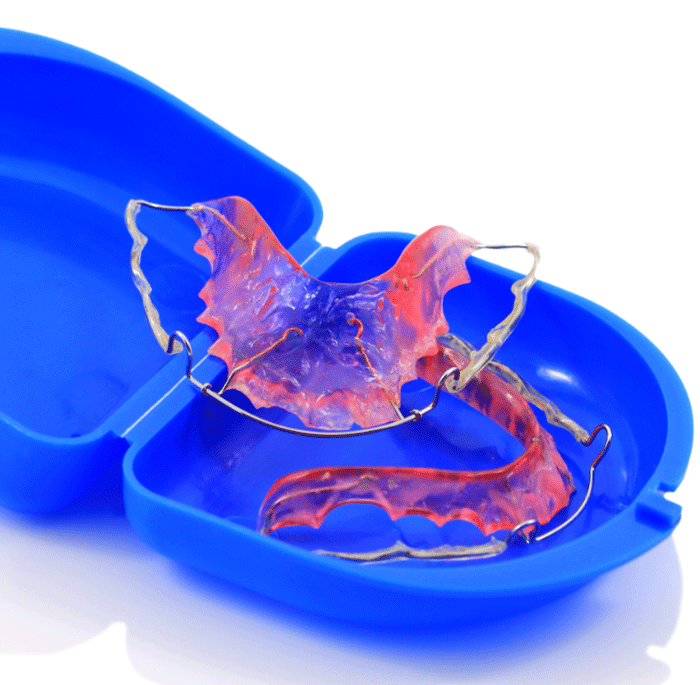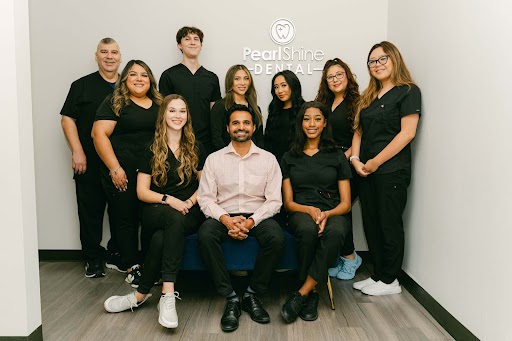Dental Retainers in Houston, TX
After orthodontic treatment ends, a retainer is used to to ensure the teeth do not regress back to their previous position.
Keep Your Teeth Aligned with a Dental Retainer
When braces are finally removed, the “retention” phase begins for most individuals. The objective of this phase is to ensure the teeth do not regress to their previous position. A retainer will be used to maintain the improved position of the teeth. A retainer is a fixed or removable dental appliance that has been custom-made by the orthodontist to fit the teeth. Retainers are generally made from transparent plastic and thin wires to optimize the comfort of the patient.
Retainers are worn for varying amounts of time, depending on the type of orthodontic treatment and the age of the patient. Perseverance and commitment are required to make this final stage of treatment successful. If the retainer is not worn as directed, treatment can fail or take much longer than anticipated.

-
What types of retainer are available?
There are a variety of retainers available, each one geared towards treating a different kind of dental problem. The orthodontist will make a retainer recommendation depending on the nature of the original diagnosis and the orthodontic treatment plan.
The following are some of the most common types of retainers:
-
Hawley retainer – The Hawley retainer consists of a metal wire on an acrylic arch. The metal wire may be periodically adjusted by the orthodontist to ensure the teeth stay in the desired position. The acrylic arch is designed to fit comfortably on the lingual walls or palate of the mouth.
-
Essix – The Essix retainer is the most commonly used vacuum-formed retainer (VFR). A mold is initially made of the teeth in their new alignment, and then clear PVC trays are created to fit over the arch in its entirety. These kinds of retainers do not affect the aesthetic appearance of the smile in the same way as the Hawley retainer.
-
Fixed retainers – A fixed retainer is somewhat similar to a lingual brace in that it is affixed to the tongue side of a few teeth. Usually, a fixed retainer is used in cases where there has been either rapid or substantial movement of the teeth. It usually consists of a single wire. The inclination of the teeth to move rapidly means they are also more likely to regress to their previous position if a fixed retainer is not placed.
-
-
How do you know when it's time to replace your retainer?
Your retainers are strong, but they won’t last forever. Replace your retainer if you detect a loose fit, an unpleasant tight fit, or cracks emerging in the retainer. Continuing to wear a broken or warped retainer might harm your smile more than it will help keep it in place. If you break or lose your retainers, contact your orthodontist as soon as possible to get a new pair.
-
Can I use my last set of aligners as my retainer?
Retainers are based on the final phase of treatment and are intended for retention. Aligners are particularly developed to facilitate mobility. When the retention phase begins and what sort of retainer/retention strategy is suitable for the patient should be determined by the treating physician.
-
What do I need to consider when using a retainer?
There are a few basic things to consider for proper use and maintenance of your retainer.
Don’t lose the appliance – It is advisable to place your retainer in its case while eating, drinking, and brushing. Leaving a retainer folded in a napkin at a restaurant or a public restroom can be very costly if lost because a replacement must be created. A brightly colored case serves as a great reminder.
Don’t eat while wearing a retainer – It can be difficult and awkward to eat while wearing a removable retainer, and it can also damage the device. Food can get trapped around a Hawley retainer wire or underneath the palate, causing bad breath. When worn on the upper and lower arches simultaneously, VFR retainers do not allow the teeth to meet. This means that chewing is almost impossible.
Clean the retainer properly – Removable retainers can become breeding grounds for mineralized plaque and bacteria. It is essential to clean the inside and outside thoroughly as often as possible. Hawley retainers and Essix retainers can be cleaned with a toothbrush. Denture cleaner or a specialized retainer cleaner is also recommended for Essix retainers.
Wear the retainer as directed – This phase of treatment is critical. The hard work has been done; the braces are off, and now it is tempting not to wear the retainer as often as the orthodontist recommends. Retainers are needed to give the muscles, tissues, and bones time to stabilize the teeth in their new alignment. Failure to wear the retainer as directed can have regrettable consequences, such as teeth returning to their original position, added expense, and lost time.
More Questions?
Still have some questions about what the best option for you is? Contact our office and we are happy to help!

